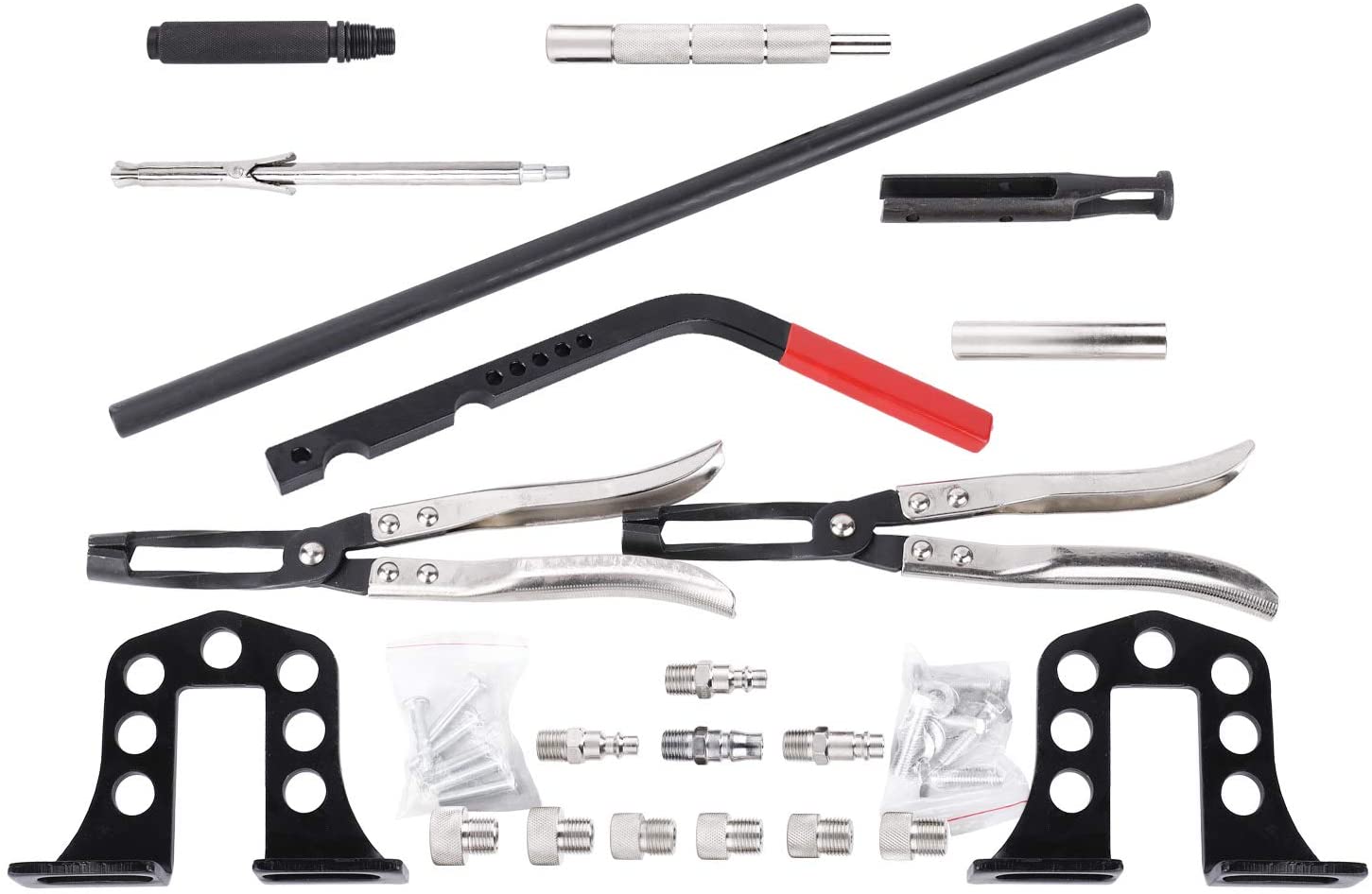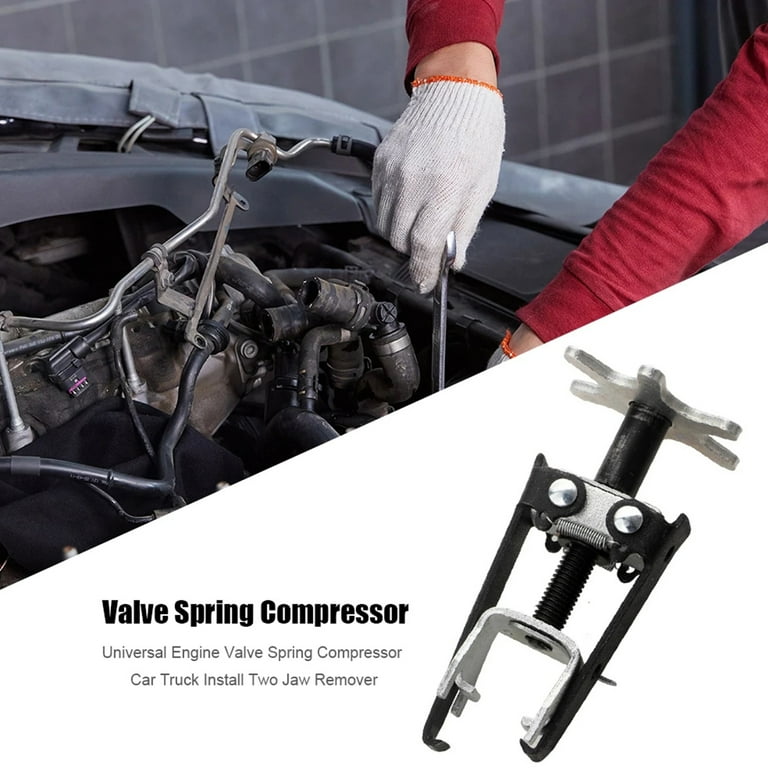Car Valve Spring Compressors A Comprehensive Guide
The smooth and efficient functioning of an internal combustion engine is dependent on a complex system of components, each with its specific role to play. One such crucial component is the valve spring, which ensures that the valves open and close at the correct time. To remove and replace valve springs, a specialized tool called a valve spring compressor is required. In this article, we will provide a comprehensive guide on car valve spring compressors, including their types, uses, and how to use them safely and effectively.
The Value of Car Valve Spring Compressors

Valve springs are under constant pressure and tension to keep the valves in place and operating correctly. Over time, they can wear out or break, causing significant damage to the engine. Replacing these springs requires a specialized tool to safely compress and hold the spring while the valve is removed or installed. This is where car valve spring compressors come in.
A valve spring compressor is a must-have tool for any mechanic or DIY enthusiast working on an internal combustion engine. It allows for safe and effective removal and installation of valve springs, preventing any potential damage to the engine or injury to the user. Investing in a high-quality valve spring compressor can save you time and money in the long run by avoiding costly repairs or replacements.
Car Valve Spring Compressors: Choosing the Right Tool for the Job

There are two main types of valve spring compressors: coil-over compressors and C-clamp compressors. Each has its advantages and disadvantages, and choosing the right one for the job is essential.
Coil-over Compressors
Coil-over compressors consist of a pair of parallel bars with a spring-loaded handle at one end. The bars are placed over the valve spring, and the handle is used to compress the spring. These types of compressors are suitable for most valve springs and are often the go-to choice for mechanics. However, they can be difficult to use in tight spaces due to their size and shape.
C-clamp Compressors
C-clamp compressors consist of two C-clamps that are attached to the valve spring retainer. The clamps are then tightened to compress the spring. These compressors are more compact than coil-over compressors, making them easier to use in tight spaces. However, they are not as versatile and may not be suitable for all types of valve springs.
When choosing a valve spring compressor, it is crucial to consider the type of engine you will be working on and the space available for the tool. It is also essential to invest in a high-quality compressor that can withstand the pressure and tension of compressing valve springs.
A Comprehensive Guide to Valve Removal with Car Valve Spring Compressors
Now that we have discussed the different types of valve spring compressors let's take a closer look at the process of removing valves using a car valve spring compressor.
- Begin by disconnecting the battery and removing any spark plugs from the engine. This will prevent any accidental starts or sparks during the compression process.
- Next, remove the valve cover to gain access to the valves and valve springs. It is recommended to clean the area around the valves before proceeding further.
- Choose the correct sized compressor for the valve spring and place it over the spring, ensuring that the claws of the compressor are gripping the spring firmly.
- Use the handle or clamp of the compressor to gradually compress the spring until there is enough clearance to remove the keepers (clips that hold the spring in place).
- Once the keepers are removed, slowly release the pressure on the compressor, and the valve will come out with the spring and retainer.
- Before installing new valves, it is essential to check the compression and tension of the springs using a spring tester. This will ensure that the new springs are within the manufacturer's specifications.
- To install the new valve, place it on top of the spring and retainer, making sure it is aligned correctly.
- Use the compressor to compress the spring again and install the keepers.
- Slowly release the pressure on the compressor, and the valve will be securely in place.
- Repeat these steps for each valve, and once all valves have been replaced, reinstall the valve cover and spark plugs before reconnecting the battery.
Safety First: Essential Precautions for Using Car Valve Spring Compressors

Working with valve springs can be dangerous if proper safety precautions are not followed. Here are some essential safety tips to keep in mind when using a car valve spring compressor:
- Always disconnect the battery and remove any spark plugs before starting work.
- Wear protective gear, such as safety glasses and gloves, to protect against flying debris or accidental sparks.
- Make sure the engine is cool before working on it to avoid burns.
- Follow the instructions provided by the manufacturer when using the valve spring compressor.
- Do not force the compressor or over-tighten it, as this can result in injury or damage to the engine.
- Double-check that the compressor is positioned correctly before attempting to compress the spring.
- If there are any signs of wear or damage on the compressor, do not use it and replace it immediately.
By following these safety precautions, you can ensure that your experience with a car valve spring compressor is safe and accident-free.
The Mechanics of Valve Springs: A Deeper Understanding for Effective Compression

To effectively use a valve spring compressor, it is essential to understand the mechanics of valve springs and their role in the engine. Valve springs are responsible for keeping the valves closed and opening them at the correct time during the engine's combustion cycle. They work under immense pressure and tension, which can wear them out over time.
When using a valve spring compressor, it is crucial to compress the spring slowly and evenly. This ensures that the spring's tension is released gradually, preventing any sudden movement or accidents. It is also essential to use the appropriate compressor for the type of valve spring being compressed. Using the wrong tool can result in damage to the compressor and the engine.
Maintaining Car Valve Spring Compressors: Ensuring Optimal Performance and Longevity
Like any other tool, regular maintenance is necessary to keep your car valve spring compressor in top working condition. Here are some tips for maintaining your compressor:
- Clean the compressor after each use to remove any debris or dirt that may affect its performance.
- Lubricate the moving parts of the compressor regularly with a high-quality lubricant.
- Store the compressor in a cool and dry place to prevent rust and corrosion.
- Check the compression and tension of the springs on the compressor periodically to ensure they are within the manufacturer's specifications.
- If there are any signs of wear or damage, replace the compressor immediately.
By following these maintenance tips, you can ensure that your car valve spring compressor will last for years to come and perform at its best.
Troubleshooting Common Issues with Car Valve Spring Compressors
Even with proper maintenance, issues can arise with car valve spring compressors. Here are some common problems and how to troubleshoot them:
The compressor is not gripping the spring properly: This could be due to worn or damaged claws on the compressor. Replace the compressor or get it repaired by a professional.
The compressor is slipping off the spring: This could be due to excess lubrication or dirt on the claws. Clean the compressor and the spring before attempting again.
The compressor is bending during use: This could be due to over-tightening or using the wrong size compressor for the spring. Always follow the manufacturer's instructions and guidelines when using a valve spring compressor.
Advanced Techniques for Valve Spring Maintenance with Car Valve Spring Compressors
Aside from removing and installing valves, car valve spring compressors can also be used for advanced maintenance tasks such as checking valve seal, cleaning valves, and adjusting the valve clearance. Here are some tips on how to use a valve spring compressor for these tasks:
Checking Valve Seal:
- After compressing the spring, place a piece of rubber tubing over the stem of the valve.
- Slowly release the pressure on the compressor until the valve hits the seat.
- The pressure from the compressed spring will hold the valve in place and create a seal.
- Using compressed air, blow air into the cylinder through the spark plug hole.
- If there is any leakage, it means the valve seal needs to be replaced.
Cleaning Valves:
- After removing the valves, use a wire brush or sandpaper to clean any carbon buildup on the surface of the valve.
- Use a valve lapping tool with grinding compound to remove any imperfections on the valve's sealing surface.
- Clean the valve, and reinstall it using the valve spring compressor.
Adjusting Valve Clearance:
- Use a feeler gauge to measure the valve clearance before adjusting.
- Place the appropriate thickness of feeler gauge between the valve stem and the rocker arm.
- Use a valve spring compressor to compress the spring and release the tension on the rocker arm.
- Adjust the screw or locknut on the rocker arm until the proper clearance is achieved.
- Recheck the clearance and adjust if necessary.
With these advanced techniques, you can ensure that your valves are properly sealed, cleaned, and adjusted for optimal engine performance.
Innovations in Car Valve Spring Compressor Technology
As technology continues to advance, so does the technology behind car valve spring compressors. Some of the latest innovations include:
- Digital spring testers that provide accurate readings and can store previous measurements.
- Variable speed compressors that allow for more precise control over the compression process.
- Compact, lightweight compressors that are easy to use in tight spaces.
With these advancements, working with valve springs has become even more efficient and precise.
Case Studies: Successful Applications of Car Valve Spring Compressors
To further understand the importance and effectiveness of car valve spring compressors, let's take a look at some successful applications:
Case Study 1: A mechanic was working on a high-performance engine and needed to replace the valves. He used a coil-over compressor and followed all safety precautions. The compression process was smooth and resulted in no damage to the engine or injury to the mechanic.
Case Study 2: A DIY enthusiast was checking the valve clearance on his car's engine. Using a feeler gauge and a valve spring compressor, he was able to adjust the clearance and improve the engine's performance without any issues.
These case studies highlight the importance of using a car valve spring compressor for safe and effective maintenance and repairs.
Conclusion
Car valve spring compressors are an essential tool for anyone working on internal combustion engines. They allow for safe and effective removal and installation of valve springs, ensuring the proper functioning of the engine. By understanding the different types of compressors, their uses, and how to use them safely and effectively, you can confidently tackle any valve spring-related task. Remember to always follow safety precautions and properly maintain your compressor to ensure optimal performance and longevity. With the latest advancements in technology, car valve spring compressors continue to prove their value in the world of automotive maintenance and repair.



